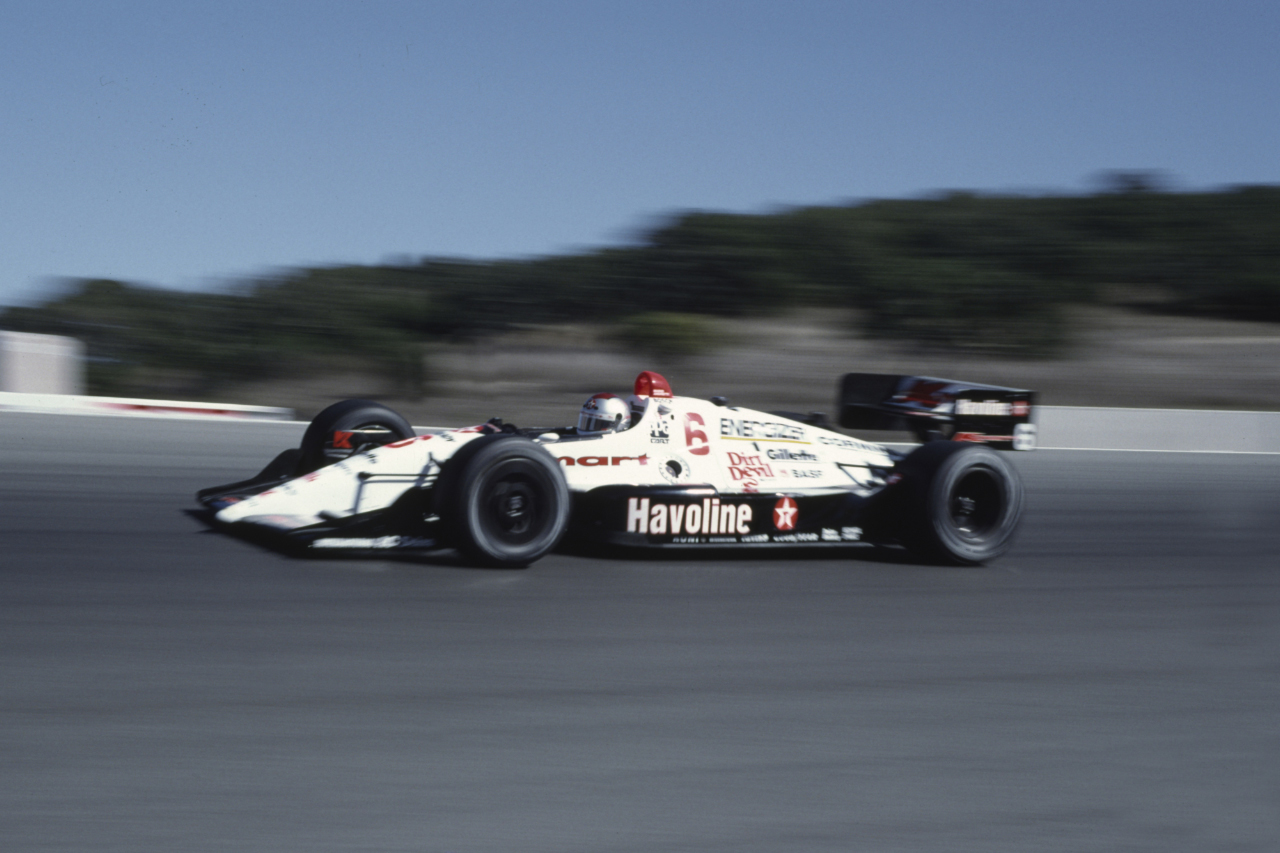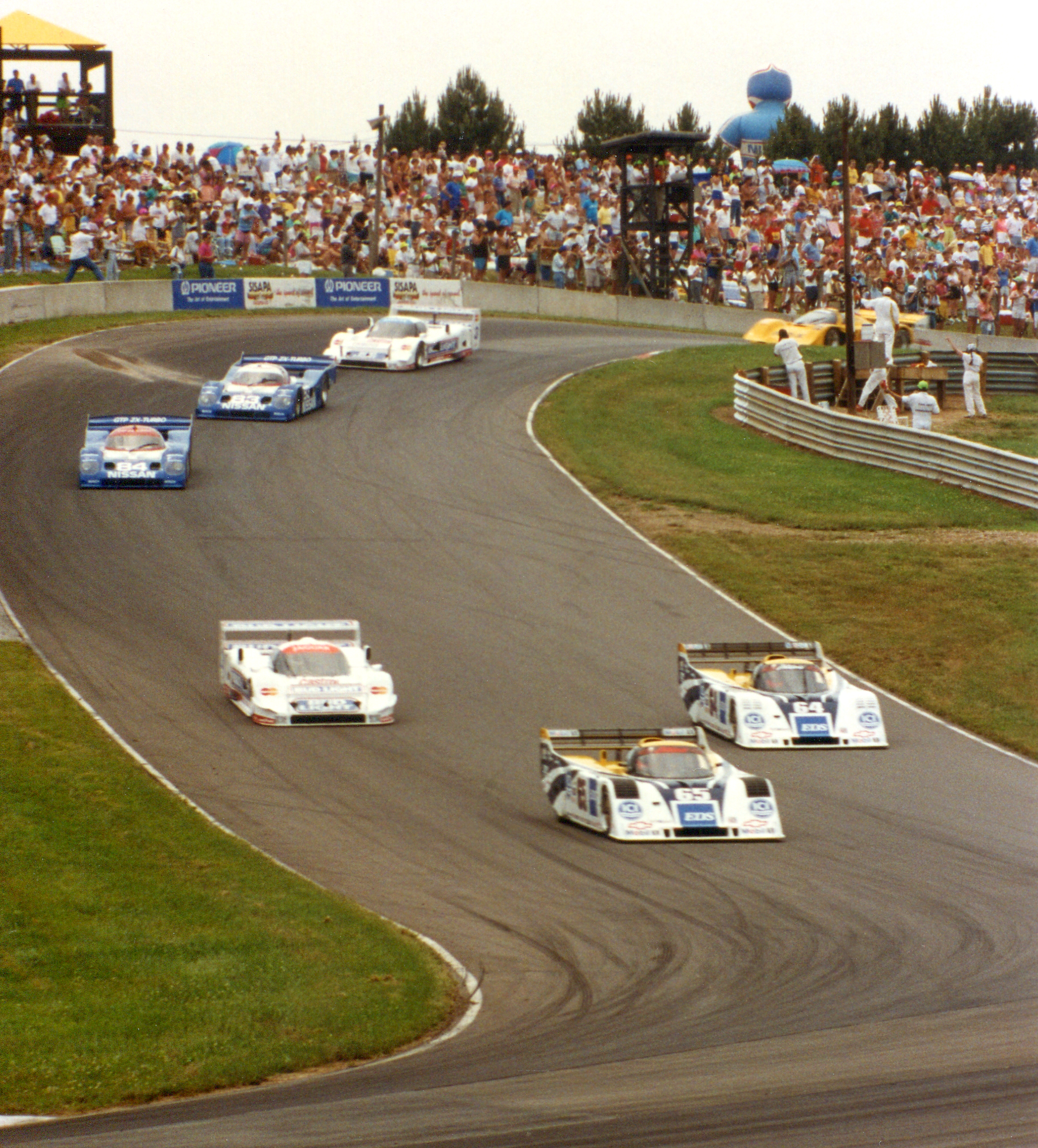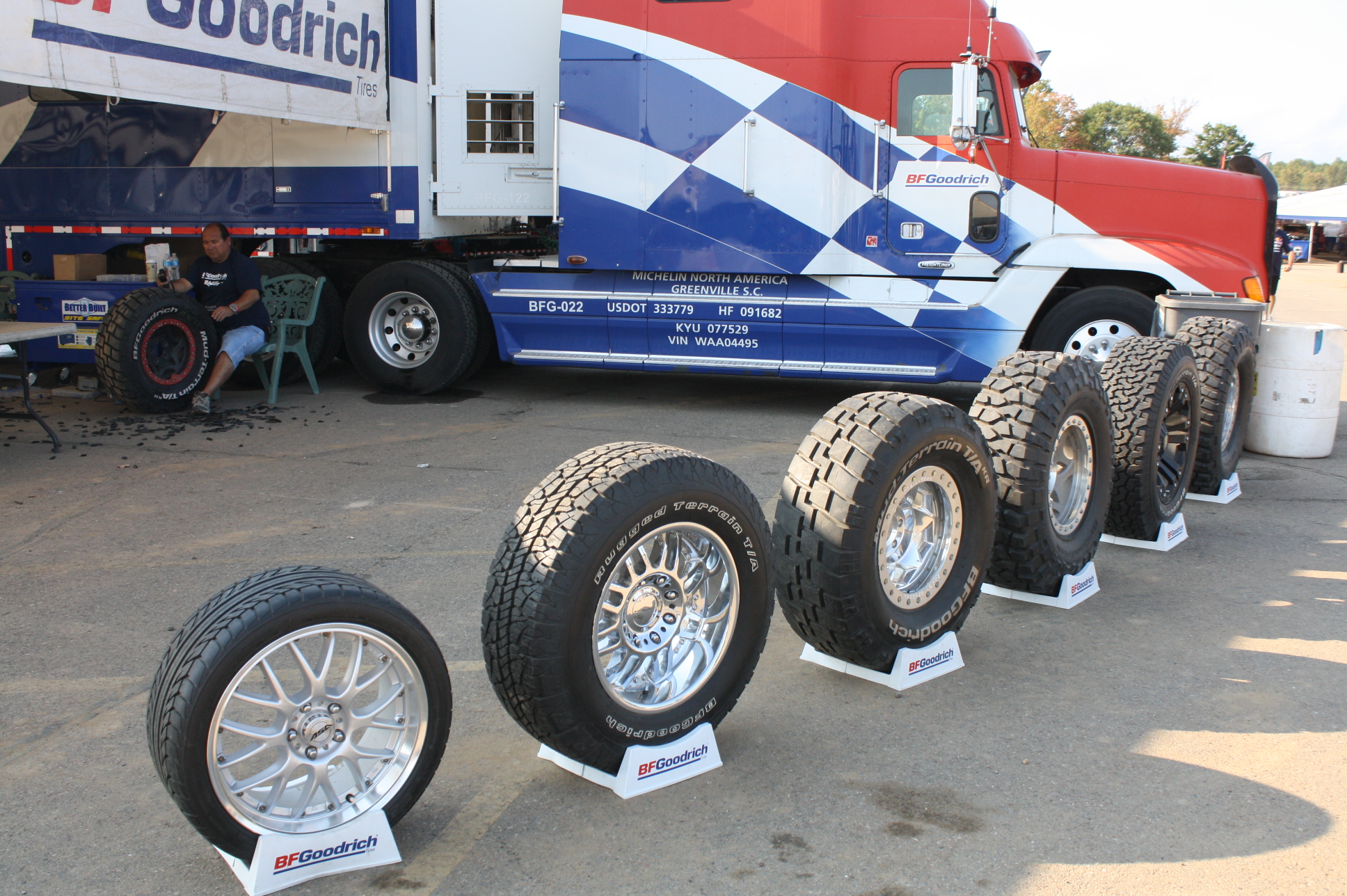|
Allard J2X-C
The Allard J2X-C, or the Allard J2X as it is sometimes referred to, was a Group C sports racing car built by Allard in 1992 for use in international sports car racing events. It featured a 3.5-litre Cosworth DFR V8 engine, capable of producing around . The J2X-C had bodywork that is more reminiscent of modern Le Mans Prototypes than a conventional Group C car, but the engine proved too weak for the level of downforce, and this, coupled with the fact that Allard Holdings were liquidated during the car's development, severely restricted the J2X and prevented it ever reaching its potential. One car was built. Development In the 1980s, Chris Humberstone, licensed the rights to the Allard name from Alan Allard, the son of the company's founder, Sidney. After a few years of wrangling, the company hired Hayden Burvill from Brun Technics to begin developing the J2X-C. He was joined in 1991 by John Iley, who was hired as the aerodynamicist, and the car was designed to have as lit ... [...More Info...] [...Related Items...] OR: [Wikipedia] [Google] [Baidu] |
Group C
Group C was a category of sports car racing introduced by the FIA in 1982 and continuing until 1993, with ''Group A'' for Touring car racing, touring cars and ''Group B'' for Grand tourer, GTs. It was designed to replace both Group 5 (motorsport), Group 5 special production cars (closed top touring prototypes like Porsche 935) and Group 6 (motorsport), Group 6 two-seat racing cars (open-top sportscar prototypes like Porsche 936). Group C was used in the FIA's World Sportscar Championship, World Endurance Championship (1982–1985), World Sports-Prototype Championship (1986–1990), World Sportscar Championship (1991–1992) and in the European Endurance Championship (1983 only). It was also used for other sports car racing series around the globe (All-Japan Sports Prototype Championship, All Japan Sports Prototype Championship, Supercup, Interserie). The final year for the class came in 1993. Broadly similar rules were used in the North American International Motor Sports Associ ... [...More Info...] [...Related Items...] OR: [Wikipedia] [Google] [Baidu] |
V8 Engine
A V8 engine is an eight- cylinder piston engine in which two banks of four cylinders share a common crankshaft and are arranged in a V configuration. Origins The first known V8 was the Antoinette, designed by Léon Levavasseur, and built in 1904 by the French Antoinette company for use in speedboat racing, cars, and later, airplanes. Also in 1904, V8 engines began small-scale production by Renault and Buchet for use in race cars. Design V-angle Most engines use a V-angle (the angle between the two banks of cylinders) of 90 degrees. This angle results in good engine balance, which results in low vibrations. However, the downside is the greater width of the engine compared to those that use a smaller V-angle. V8 engines with a 60-degree V-angle were used in the 1996–1999 Ford Taurus SHO, the 2005–2011 Volvo XC90, and the 2006–2009 Volvo S80. The Ford engine used a 60-degree V-angle because it was based on a V6 engine with a 60-degree V-angle. ... [...More Info...] [...Related Items...] OR: [Wikipedia] [Google] [Baidu] |
Le Mans Prototype
A Le Mans Prototype (LMP) is a type of sports prototype race car used in various races and championships, including the 24 Hours of Le Mans, FIA World Endurance Championship, IMSA SportsCar Championship, European Le Mans Series, and Asian Le Mans Series. Le Mans Prototypes were created by the Automobile Club de l'Ouest (ACO). The technical requirements for an LMP include bodywork covering all mechanical elements of the car. there are two classes within Le Mans Prototypes, designated LMP2 and LMP3. While not as fast as open-wheel Formula One cars around a track, the LMP1s were the fastest closed-wheel racing cars used in circuit racing. Le Mans Prototypes are considered a class above production-based grand tourer cars, which compete alongside them in sports car racing. Later, LMP1 designs included Hybrid vehicle, hybrid cars that use electric motors to assist acceleration. The Le Mans Prototype LMP1 class has been replaced by Le Mans Hypercars in the FIA World Endurance Champi ... [...More Info...] [...Related Items...] OR: [Wikipedia] [Google] [Baidu] |
Sports Car Racing
Sports car racing is a form of motorsport road racing that uses sports cars with two seats and enclosed wheels. They may be either purpose-built Sports prototype, sports prototypes, which are the highest level in sports car racing; or grand tourers (GT cars) based on road-going models and therefore, in general, not as fast as sports prototypes. Sports car races are often Endurance racing (motorsport), endurance races run over particularly long distances or large amounts of time, emphazing on reliability and efficiency of the car and its drivers more than outright car performance or driver skills. The FIA World Endurance Championship and IMSA SportsCar Championship are some of the best-known sports car racing series. Sports car racing is one of the main types of circuit auto racing, alongside open-wheel racing (such as Formula One), touring car racing (such as British Touring Car Championship, BTCC, which is based on 'saloon cars' as opposed to the 'exotics' seen in sports cars) ... [...More Info...] [...Related Items...] OR: [Wikipedia] [Google] [Baidu] |
Laguna Seca Raceway
Laguna Seca Raceway (branded as WeatherTech Raceway Laguna Seca, and previously Mazda Raceway Laguna Seca for sponsorship reasons) is a paved road racing track in central California used for both auto racing and motorcycle racing, built in 1957 near both Salinas and Monterey, California, United States. The racetrack is long, with a elevation change. Its eleven turns are highlighted by the circuit's signature turn, the downhill-plunging "Corkscrew" at Turns 8 and 8A. A variety of racing, exhibition, and entertainment events are held at the raceway, ranging from superkarts to sports car racing to music festivals. Laguna Seca is classified as an FIA Grade Two circuit. The name Laguna Seca is Spanish for ''dry lake'': the area where the track now lies was once a lake, and the course was built around the dry lake bed. After the course was reconfigured, two artificial ponds were added. History The earliest development of the local area occurred in 1867 with the founding o ... [...More Info...] [...Related Items...] OR: [Wikipedia] [Google] [Baidu] |
IMSA GTP Championship
IMSA GT was a sports car racing series organized by International Motor Sports Association. Races took place primarily in the United States and occasionally in Canada. History The series was founded in 1969 by John and Peggy Bishop, and Bill France, Sr. Racing began in 1971, and was originally aimed at two of FIA's stock car categories, running two classes each; the GT ( Groups 3 and 4) and touring (Group 1 and 2) classes. The first race was held at Virginia International Raceway; it was an unexpected success, with both the drivers and the handful of spectators who attended. For the following year, John Bishop brought in sponsor R. J. Reynolds, and in 1975 introduced a new category: All American Grand Touring (AAGT). In 1977, the series went through a series of major changes. IMSA permitted turbocharged cars to compete for the first time, as well as introducing a new category: GTX, based on Group 5 rules. In 1981, after Bishop decided to not follow FIA's newly introduce ... [...More Info...] [...Related Items...] OR: [Wikipedia] [Google] [Baidu] |
Goodyear Tire And Rubber Company
The Goodyear Tire & Rubber Company is an American multinational tire manufacturer headquartered in Akron, Ohio. Goodyear manufactures tires for passenger vehicles, aviation, commercial trucks, military and police vehicles, motorcycles, recreational vehicles, race cars, and heavy off-road machinery. It also licenses the Goodyear brand to bicycle tire manufacturers, returning from a break in production between 1976 and 2015. As of 2017, Goodyear is one of the top five tire manufacturers along with Bridgestone (Japan), Michelin (France), Pirelli (Italian) and Continental AG, Continental (Germany). Founded in 1898 by Frank Seiberling, the company was named after American Charles Goodyear (1800–1860), inventor of Vulcanization, vulcanized rubber. The first Goodyear tires became popular because they were easily detachable and required little maintenance. Though Goodyear had been manufacturing airships and balloons since the early 1900s, the first Goodyear Blimp, Goodyear advertising ... [...More Info...] [...Related Items...] OR: [Wikipedia] [Google] [Baidu] |
BF Goodrich
BFGoodrich is an American tire brand. Originally part of the industrial conglomerate Goodrich Corporation, it was acquired in 1990 (along with Uniroyal, then The Uniroyal Goodrich Tire Company) by the French tire maker Michelin. BFGoodrich was the first American tire manufacturer to make radial tires. It made tires for the then new Winton car from Winton Motor Carriage Company. BFGoodrich tires have been fitted to several noteworthy historical vehicles: * In 1903 the first car to cross the United States was fitted with BFGoodrich tires. * In 1927 Charles Lindbergh's airplane, the "Spirit of St. Louis," which made the first successful solo non-stop flight across the Atlantic, was fitted with BFGoodrich tires. * The Space Shuttle Columbia's landing gear was fitted with BFGoodrich tires. BFGoodrich has been involved in several Baja California Competitions and enjoyed success with 28 overall victories at the Baja 1000 and 13 times winner of the Paris–Dakar Rally. History ... [...More Info...] [...Related Items...] OR: [Wikipedia] [Google] [Baidu] |
Sequential Manual Transmission
A sequential manual transmission, also known as a sequential gearbox or sequential transmission, is a type of Non-synchronous transmission, non-synchronous manual transmission used mostly in motorcycles and Auto racing, racing cars. It produces faster shift times than traditional Manual transmission#Synchronized transmission, synchronized manual transmissions, and restricts the driver to selecting either the next or previous gear, in a successive order. Design A sequential manual transmission is non-synchronous transmission, unsynchronized, and allows the driver to select either the next gear (e.g. shifting from first gear to second gear) or the previous gear (e.g., shifting from third gear to second gear), operated either via electronic paddle-shifters mounted behind the steering wheel or with a sequential shifter. This restriction avoids accidentally selecting the wrong gear; however, it also prevents the driver from deliberately "skipping" gears. The use of dog clutches (ra ... [...More Info...] [...Related Items...] OR: [Wikipedia] [Google] [Baidu] |
March Engineering
March Engineering was a Formula One constructor and manufacturer of customer racing cars from the United Kingdom. Although only moderately successful in Grand Prix competition, March racing cars enjoyed much better success in other categories of competition, including Formula Two, Formula Three, American Championship Car Racing, IndyCar and International Motor Sports Association, IMSA IMSA GT Championship, GTP sportscar racing. 1970s March Engineering began operations in 1969. Its four founders were Max Mosley, Alan Rees (racing driver), Alan Rees, Graham Coaker and Robin Herd. The company name is an acronym of their initials. They each had a specific area of expertise: Mosley looked after the commercial side, Rees managed the racing team, Coaker oversaw production at the factory in Bicester, Oxfordshire, and Herd was the designer. The history of March is dominated by the conflict between the need for constant development and testing to remain at the peak of competitiveness i ... [...More Info...] [...Related Items...] OR: [Wikipedia] [Google] [Baidu] |
Leyton House
Leyton House Racing was a Formula One constructor that raced in the 1990 and 1991 seasons. It was, in essence, a rebranding of the March team which had returned to F1 in . Leyton House, a Japanese real estate company, had been the team's marquee sponsor since that year, and went on to buy the team in 1989. Drivers Ivan Capelli and Maurício Gugelmin, who had been with March since 1987 and 1988 respectively, continued with the team under its new guise. Origins In 1986, Akira Akagi's driver Akira Hagiwara died when he crashed a Mercedes 190E touring car during a test session at Sportsland Sugo. Then Akagi went to Imola for the F3000 race, where he met Ivan Capelli's manager Cesare Gariboldi. Akagi wanted to have Capelli driving for him in the 1986 Japanese Formula Two Championship in place of Hagiwara. Capelli finished his partial Japanese season with a third place at Suzuka. Akagi gave Capelli extra prize money for his efforts and he also gave Capelli more money to continue in ... [...More Info...] [...Related Items...] OR: [Wikipedia] [Google] [Baidu] |






